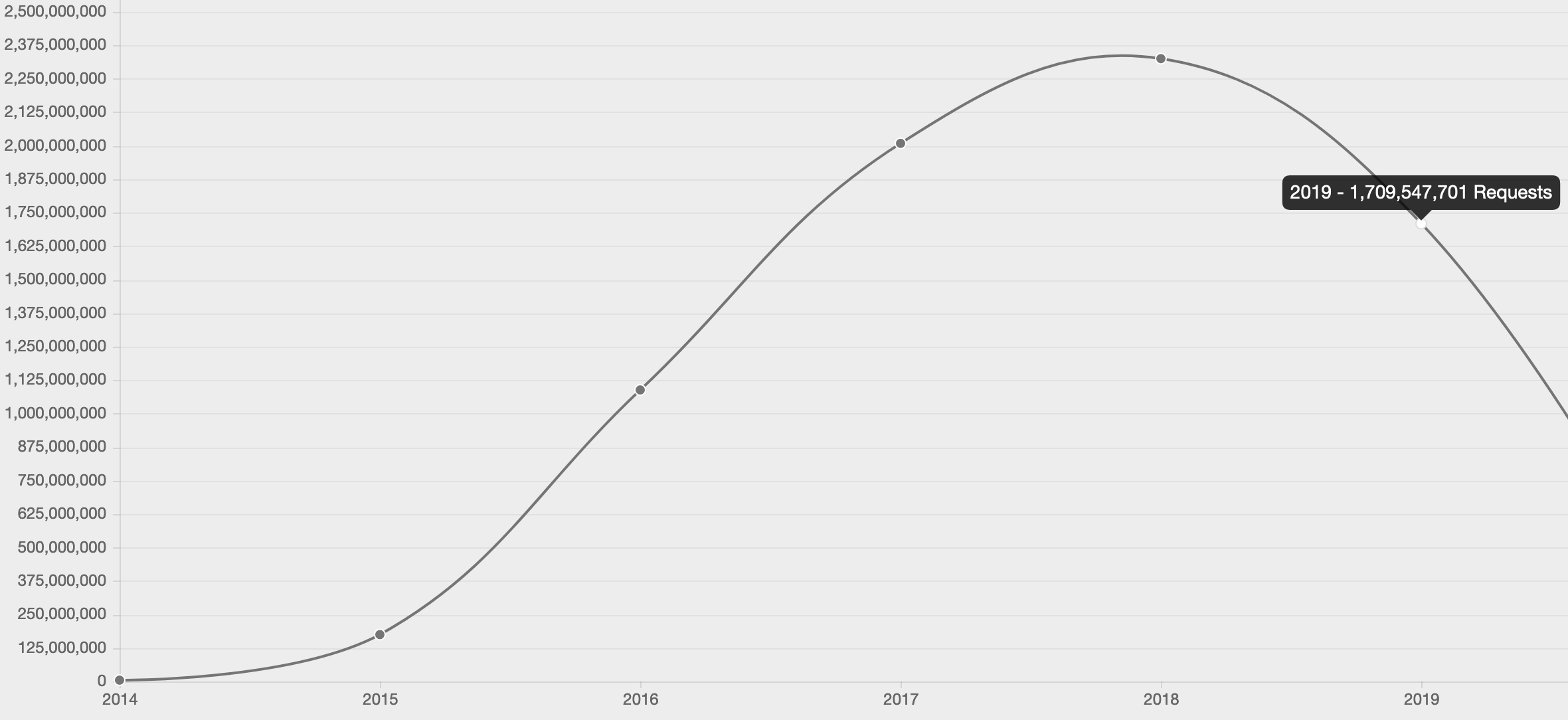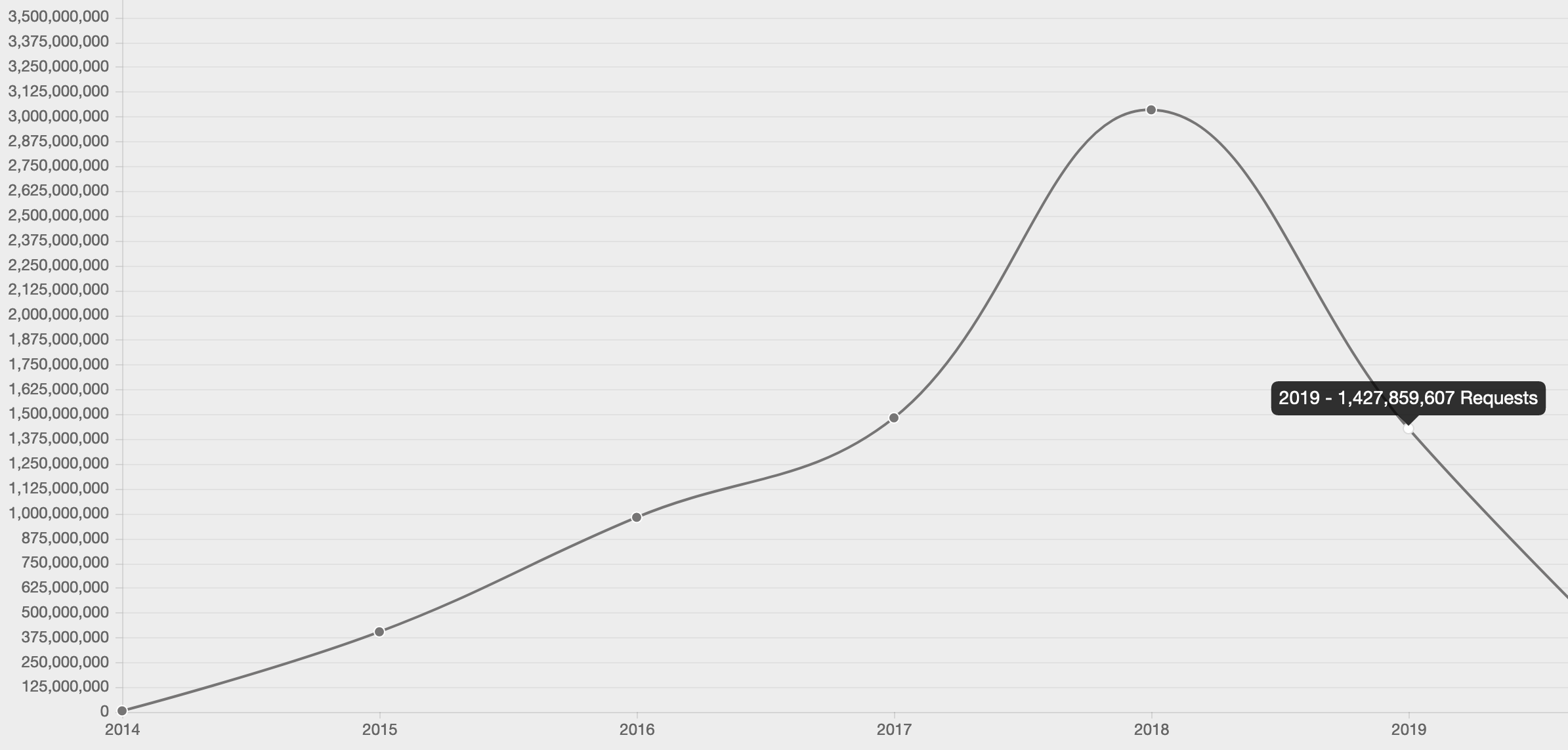It is already six years and a day since we started operations.
Usage has gone ~25% down on the IP list, with 1.7 billion queries recorded in 2019 (over 2.3 in 2018). The decline is even more marked on the right-hand side list, with 1.4B in 2019 compared to over 3B in 2018.


As always, thank you to everybody who is querying the data. If you have any suggestions, the usual email address is listening.
It would be interesting to see the types of institutions (e.g. pharma companies, universities, etc.) by percentage.
I see that one of the email services listed on your blacklist is used by numerous vendors in the life sciences and I’ve searched other blacklists and they aren’t listed, so how effective is your blacklist? In other words, do you actually have a positive effect. I know from dealing with this particular vendor directly that much of their database is skimmed from various sources.
Thanks Charles.
It would indeed be interesting to see those things. However, the information is not there to be gathered easily in the listings. Even if you have access to the back end, all you get is convenient access to all the descriptive DNS TXT records, and you’d need to do quite a bit of manual work to fit them all into neat little boxes because the descriptions themselves don’t have any categories. You’d also need to remember that an
A.B.C.*listing is a /24 (256 IP addresses) and adjust your calculations accordingly to be able to say that “so and so many percent of our IP listings affect this and that category” reliably. The domain listings obviously have no corresponding pitfall for the aspiring statistician.At the moment, the IP based list has around 8500 entries, of which just over 3000 are /24’s. The domain name list has just short of 6300 names.
You mention things not being listed on other blacklists. That’s actually our raison d’être, which we have documented in WHAT IS THIS, ANYWAY.
Whether this list is effective: that question must be posed to whoever is actually using it to reject email.